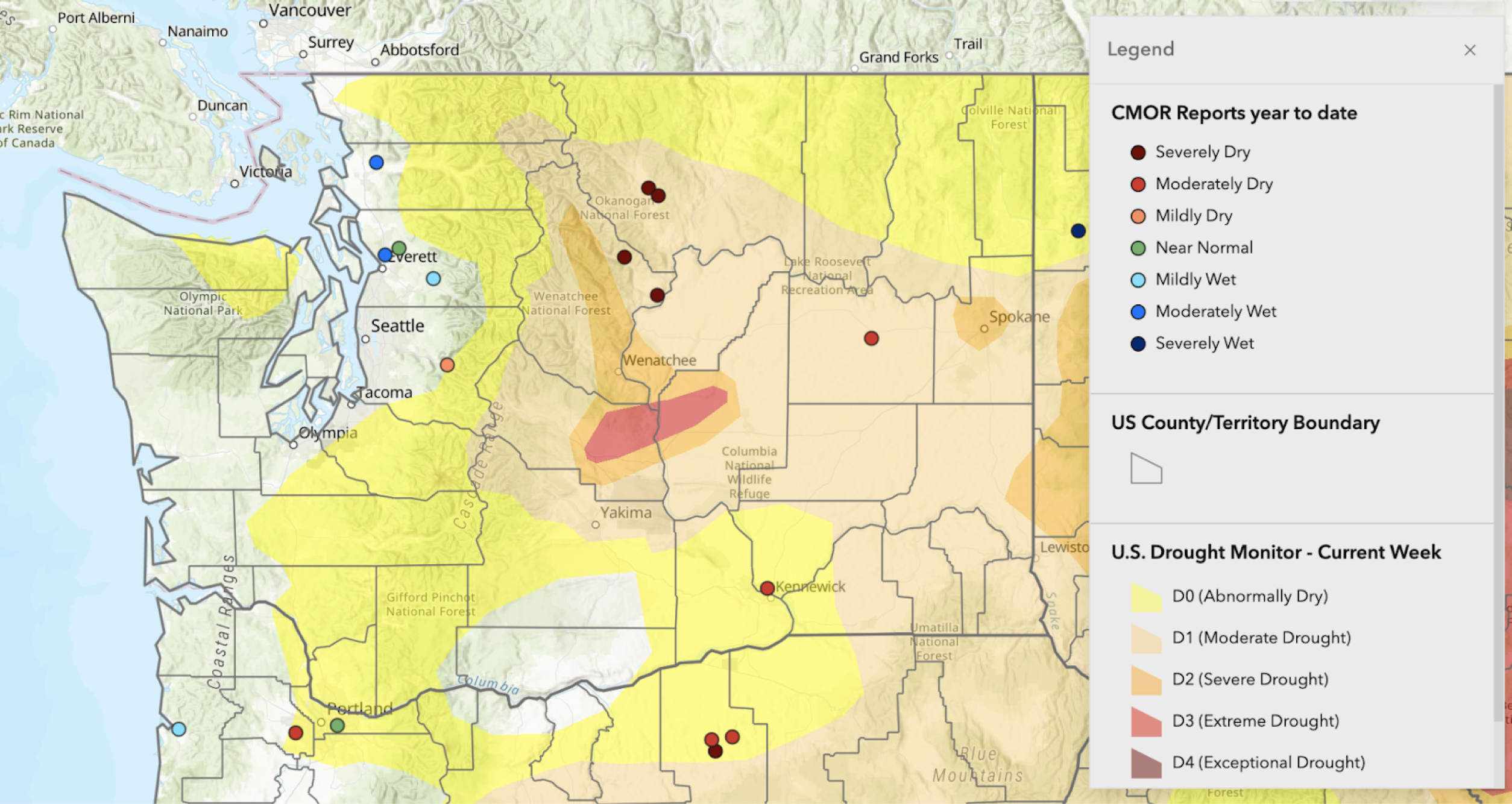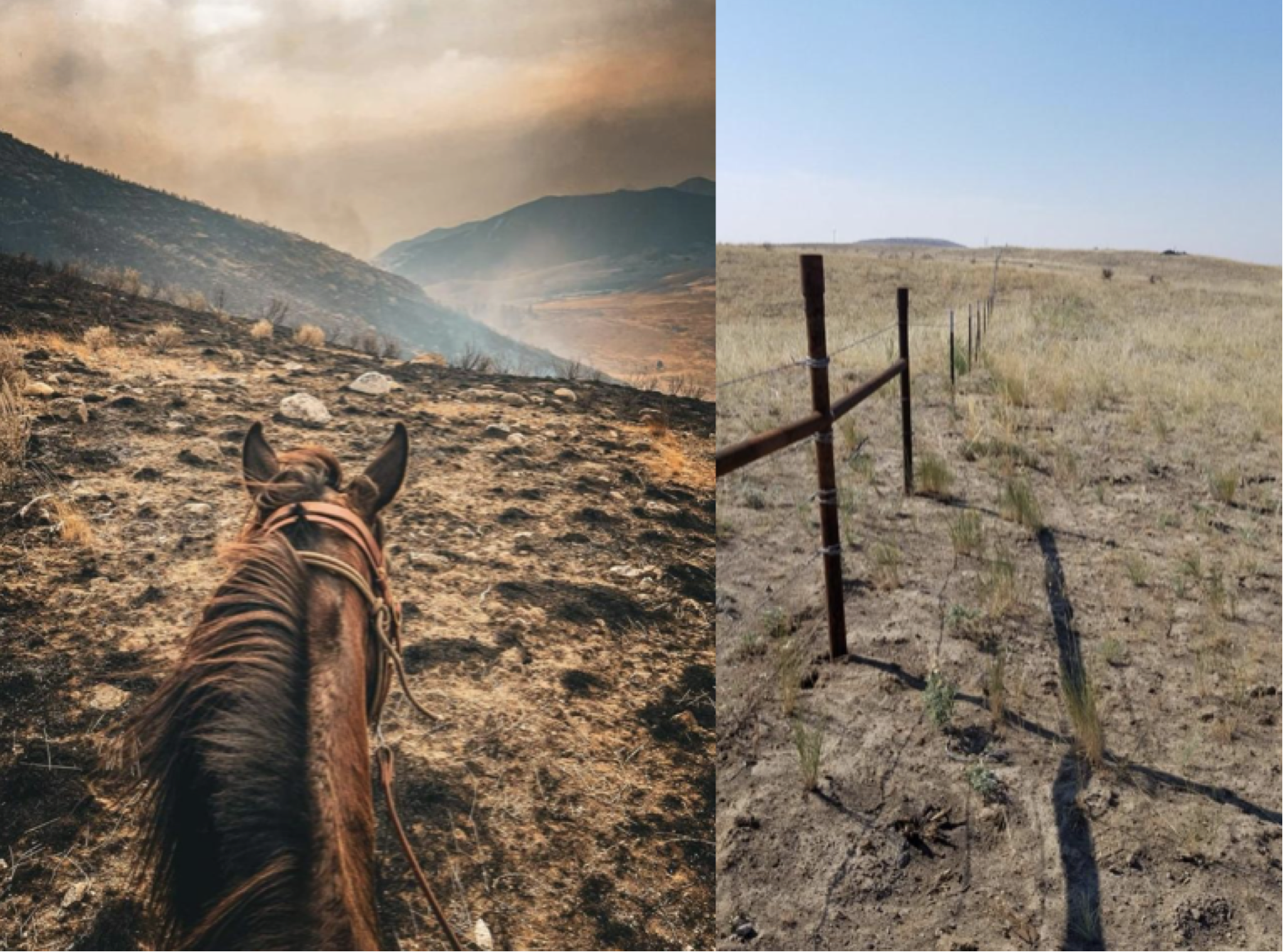See More Drought with C-MOR Drought Reporting
The Condition Monitoring Observer Reports on Drought (CMOR-Drought) is a collaborative effort by the National Drought Mitigation Center (NDMC), USDA Climate Hubs, and NOAA National Integrated Drought Information Systems (NIDIS) to document drought impacts across the nation since 2018. We typically post a link to the survey in the “Drought Update” section of the monthly newsletter. Anyone can fill out the survey at any time during the year. The point is to share observations about the environmental conditions around you — whether that location is home, work, a road trip, etc. In the survey, you can rate conditions on a scale from severely dry to severely wet. There are five categories in between: moderately dry, abnormally dry, near-normal, abnormally wet, and moderately wet. In the survey, you can list impacts related to agriculture, municipal water supply, hydropower, public health, recreation, industry, forestry, and wildlife. A useful feature of the application is the ability to upload photos, which can go a long way in describing on- the-ground conditions. As the saying goes: a picture is worth 1000 words.OWSC uses these reports in our drought monitoring efforts in a number of ways. They allow us to have “eyes on the ground” and ensure we are accurately representing impacts across Washington State. For example, if we see several CMOR reports for a particular location, we might look more closely at other meteorological datasets and drought indices for that location, to make sure we understand how drought conditions are evolving there. And we can bring that information back to the state as we help them monitor for drought.
These reports are also used nationally, by the U.S. Drought Monitor authors, to help verify that the right designations are being used. Submitting a CMOR report can help ensure that agencies and others are aware of drought impacts, ultimately bringing benefits to the communities that experience them. Considering Washington State declared drought in mid-April, let’s go over what has been reported so far.
All the reports from the beginning of the year are shown in Figure 1. Two “moderately wet” reports in Snohomish and Skagit counties were reported in May and June, respectively. In July, five reports were made ranging from mildly dry to severely dry: two in Okanogan county, two in Chelan county, and one in King county. Both of the reports from Okanogan county were made on July 21. The first reports severely dry conditions county-wide and poor crop conditions as well as very poor range conditions with less water for irrigation, reduced yields, insect infestations, plant stress, the need for supplemental feeding for livestock, and less water in ponds/creeks. This report included photos of a fire burning through local rangeland with clearly visible wildfire smoke, one of which is reproduced here (Figure 2). The second report from Okanogan county on July 21 focused more on the hot and dry conditions throughout the Methow Valley impacting livestock. This reporter mentions needing to buy hay for supplemental cattle feed, decreased stock weights, and animal stress. This reporter also has concerns about having lighter calves at weaning. A photo of poor pasture conditions is included with the report (Figure 2).
The two Chelan county reports were made on July 19 and 20 and both noted the hot and dry period of the first few weeks of July with temperatures ranging between the mid-90s and mid-100s. Neither included pictures but they both list impacts to nearly every sector including poor crop conditions, poor air quality, increased fire danger, reduced recreation (boating/rafting), needle drop or sparse canopy, dead trees, and warmer water temperatures (impacting fish).
The final July report came in on the 13th from Valley Camp in eastern King county. They report their measurements showed precipitation 30% below normal by mid-July. Both fire and forestry impacts were noted including the campfire ban, smoke from distant fires, and discolored leaves and leaf drop.
Over the span of one week from late August to early September, three more CMOR impacts were reported. Two reports were made in Snohomish county on August 30, one classifying conditions as “near-normal” and the other “mildly wet”, noting the recent precipitation that caused vegetation to green. The last report on September 3 classified Lincoln county as “moderately dry” and mentioned only “fair” crop and pasture conditions with the possibility of reduced yields and the need to transport water for livestock.
here.

